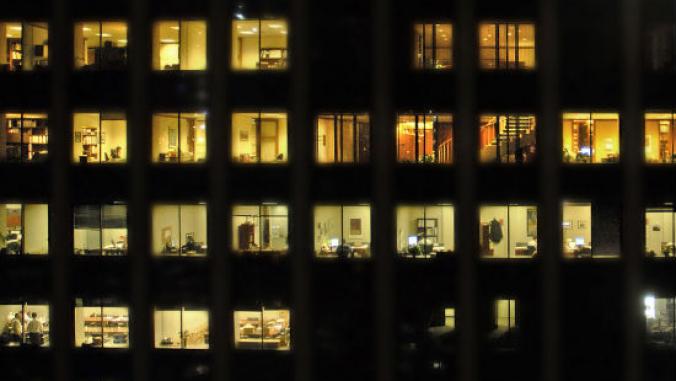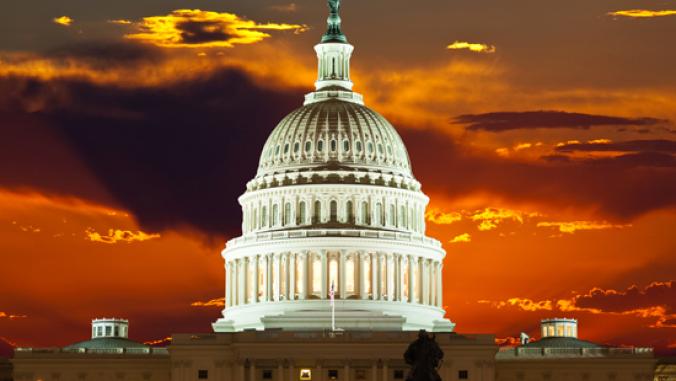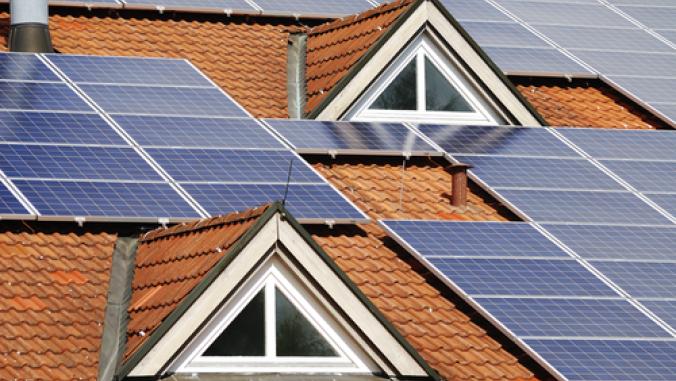New York's New Green Building Laws and the Message They Hold for Climate Talks
<p>It's been an interesting several days on the green building policy front. Is the glass half empty or half full? I'm an optimist, so I opt for half full, but you be the judge.</p>

Image CC licensed by Flickr user joiseyshowaa. http://www.flickr.com/photos/30201239@N00/4044792129/
It's been an interesting several days on the green building policy front. Is the glass half empty or half full? I'm an optimist, so I opt for half full, but you be the judge.
On Wednesday, December 9, New York City passed a package of green building legislation, the "Greener Greater Buildings Plan", that puts the Big Apple in a leadership position on sustainable retrofits for existing buildings.
New York's new energy audit and retrocommissioning bill would require most large privately-owned properties to conduct energy efficiency audits and undergo retrocommissioning -- the testing and recalibration of building systems to ensure as-designed performance-- once every 10 years.
The requirements, which go into force in 2013, would apply to properties in excess of 50,000 gross square feet, to two or more buildings on the same tax lot that together exceed 100,000 gross square feet, and to two or more condominiums exceeding 100,000 gross square feet that are governed by the same board of managers.
Properties certified under EPA's Energy Star program or under LEED Existing Buildings 2009 would be exempted from the audit and retrocommissioning requirements. Municipal properties covered under the legislation would be required to undertake identified capital improvements that would, either individually or in combination, achieve simple payback in seven years or fewer.
{related_content}Also passed on December 9 were bills requiring most large properties to annually benchmark their energy efficiency with EPA's Energy Star portfolio manager and to complete lighting upgrades and tenant submetering by January 1, 2025. A fourth measure establishes a New York City Energy Conservation Code that governs building alternations and new construction.
The new laws underpin efforts to reduce New York City greenhouse gas emissions by 30 percent by 2017, and are expected to create thousands of new jobs. A $16 million revolving loan fund created with federal stimulus money would help to support a first round of retrofits.
The final energy audit and retrocommissioning statute does not mandate the retrofit of privately-owned buildings, a provision originally included in the legislation. The energy efficient retrofit requirement was jettisoned on December 5 at the behest of commercial real estate owners, who argued that economic downturn -- which admittedly has hit the real estate industry hard -- precluded mandated spending on retrofits.
So, is the final New York City bill “a disappointing retreat” as characterized -- with respect to the dropping of the mandatory retrofit provision -- by Jeffrey Grabelsky of Cornell University, or “one of the most comprehensive, aggressive efforts anywhere in the country," as hailed by Donna De Costanzo, a senior attorney with the Natural Resources Defense Council?
Both views are legitimate ones. I tend somewhat more to De Costanzo's view, because I'm optimistic that the legislation will create a market imperative for green building retrofits in New York City, and spur other jurisdictions to follow suit.
My bet is that commercial building owners in New York City will quickly recognize the value of energy efficiency upgrades, with key marketing benefits going to the more aggressive early movers.
As documented in my new book from the Urban Land Institute, "Retrofitting Buildings to be Green and Energy Efficient," LEED- and Energy Star-compliant building retrofits are frequently far more affordable than typically thought, with many in the $.21-$.50/square foot range; many green retrofits pay off in two years or fewer-some in less than a year's time.
While payback periods and retrofit costs per square foot vary with building condition and size, numerous and effective energy efficiency strategies can be implemented with proven and fairly simple technologies (the installation of variable speed drives on mechanicals, daylight sensors, low-flow fixtures) and load management, adjusting building operations to minimize unneeded energy use.
As well, the payoffs associated with green or energy efficient retrofits are frequently significant. My new book summarizes some of the most recent evidence. For example, a recent study of Energy Star-rated buildings in the U.S. CoStar database by the University of California at Berkeley and Maastricht University found that a $1 saving in energy costs from increased thermal efficiency yielded a return of roughly $18 in increased valuation.
The 13 detailed, international retrofit case studies developed for the book -- drawn from the U.S., Canada, Europe, and Asia-Pacific -- indicate that green and energy efficient features enhance occupant satisfaction significantly and can be incorporated successfully into effective leasing and tenant retention efforts.
In the wake of the passage of the New York City bills, Mayor Michael Bloomberg is heading to Copenhagen. I hope that he'll use his visit to highlight the role of green and energy efficient buildings in fighting climate change. My message for the Copenhagen delegates: New greenhouse gas reduction accords should emphasize the building sector to create massive global emissions reductions and new jobs.
The UN agrees. The Intergovernmental Panel on Climate Change (the entity that shared the Nobel Prize with Al Gore) has concluded that building upgrades are among the most effective strategies to address climate change. According to the IPCC, cost-effective energy efficiency measures in buildings could reduce building emissions by 30 percent from the 2020 estimated baseline. This would eliminate roughly 3.2 gigatons of CO2 from the atmosphere, reducing total 2020 climate change emissions by some 7 to 10 percent.
As a first step, the Copenhagen process should take steps to incorporate building upgrades into the global carbon trading system. To date, few real estate projects have been undertaken under the international carbon trading regime. As of October 2008, only 10 projects to reduce building energy use were in the pipeline.
As the UN's Sustainable Building and Construction Initiative has recommended, it's time to revise the carbon trading framework to encourage additional participation by the property sector. I hope that Mayor Bloomberg and his team will carry that message to Copenhagen -- it's high time to bring buildings to the forefront of the climate change discussion.
Leanne Tobias is founder and managing principal of Malachite LLC, an advisory firm that specializes in the development, leasing, management, financing and certification of sustainable or green real estate on a global basis.
Image CC licensed by Flickr user joiseyshowaa.





